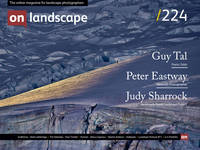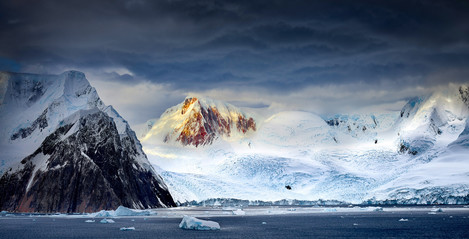Featured Photographer

Peter Eastway
Peter Eastway won the Aerial category of the 2023 Natural Landscape Photography Awards. A professional photographer for over 40 years, he won the Australian Professional Photographer of the Year twice, was chairman of the Australian Professional Photography Awards and has been publishing Better Photography magazine since 1995. His magazine is at www.betterphotographyeducation.com and the group of photographers mentioned in the article, ND5, can be found at www.nd5.com.au. www.nd5.com.au

Michéla Griffith
In 2012 I paused by my local river and everything changed. I’ve moved away from what many expect photographs to be: my images deconstruct the literal and reimagine the subjective, reflecting the curiosity that water has inspired in my practice. Water has been my conduit: it has sharpened my vision, given me permission to experiment and continues to introduce me to new ways of seeing.
Sometimes it’s good to swap sides of the desk and for this issue, we are interviewing Peter Eastway, who among many other things is Editor and Publisher of Better Photography Magazine. When I got in touch with Peter he initially wondered if it was payback for sending Tim some work, but I had quite coincidentally been enjoying Peter’s images. Of the many on his website, we’ve largely narrowed our image selection down to the Polar Regions, a particular passion of Peter’s, and of course his homeland, Australia. While the diversity of locations he has visited might prompt you to think that travel is the key to a successful image you’ll find out that, for Peter, image capture is only the beginning of the story and his ethos can be applied wherever you chose to photograph.
Would you like to start by telling readers a little about yourself – where you grew up, your education and early interests, and what that led you to do?
I’m told I was conceived in England and born in Melbourne, but I’ve lived all my knowing life in Sydney, Australia. Most of the time I’ve worked as a professional photographer, including editing and publishing photography magazines, plus a number of other business interests.
When did you first pick up a camera? What prompted this and what kind of images did you want to make?
In school, my first camera was a Ricoh compact in a circular water housing. As a keen surfer, I wanted to photograph my friends from the water. I was infatuated with surfing and couldn’t really understand why people would want to take photos of anything other than surfing! Later in life, I changed this view.
Who (photographers, artists or individuals) or what has most inspired you, or driven you forward in your own development as a photographer?
As a photo magazine editor for over 40 years, it’s hard to pinpoint one or two photographers who have inspired me because there are so many. What’s the difference between plagiarism and inspiration? Plagiarists copy one photographer, but when you’re inspired, you’re copying the work of thousands. Editing a photography magazine has given me an appreciation of every genre of photography (except maybe passport portraits) and I have met and interviewed many of my heroes as well.
However, since we have a polar bent to this article,


